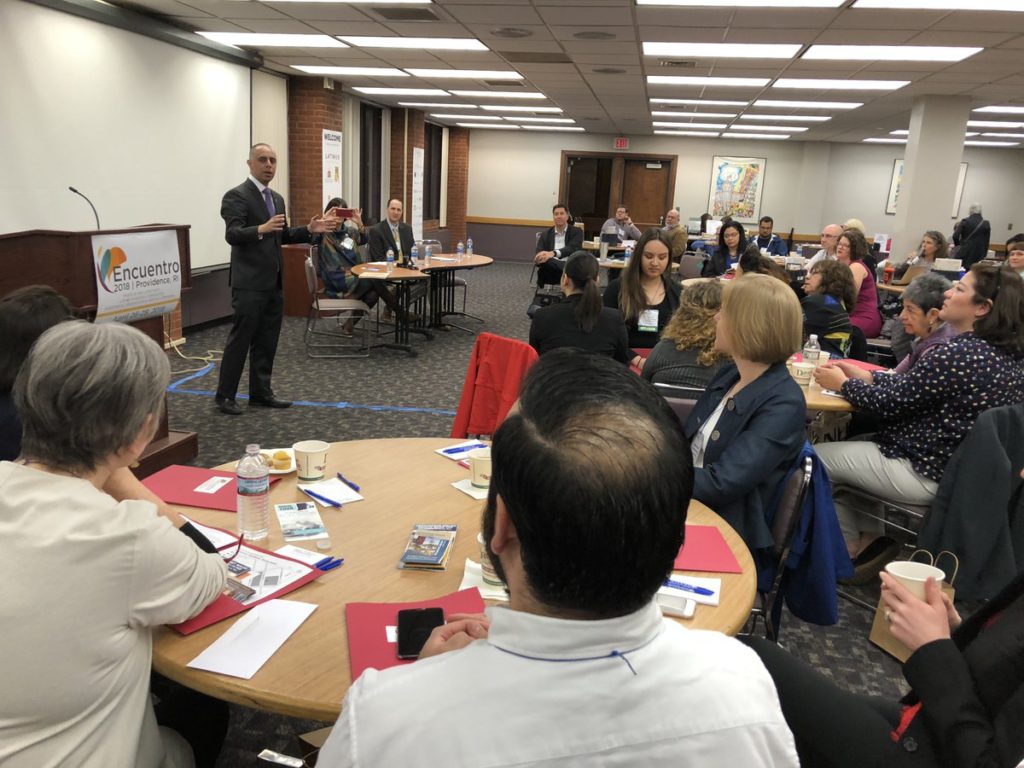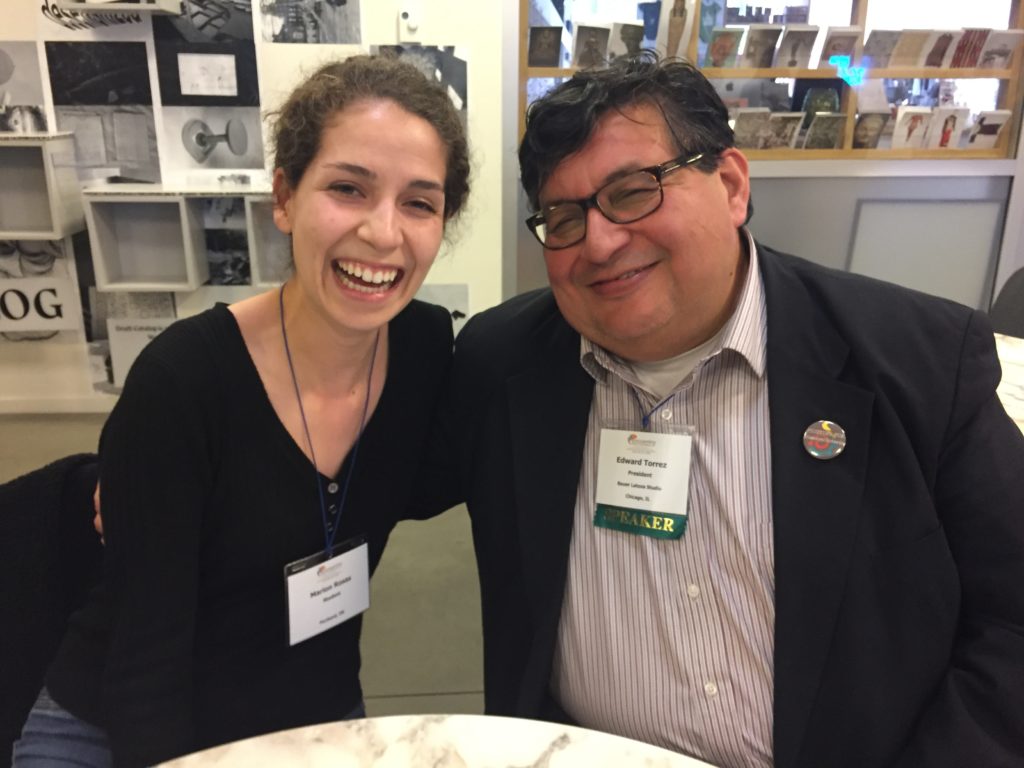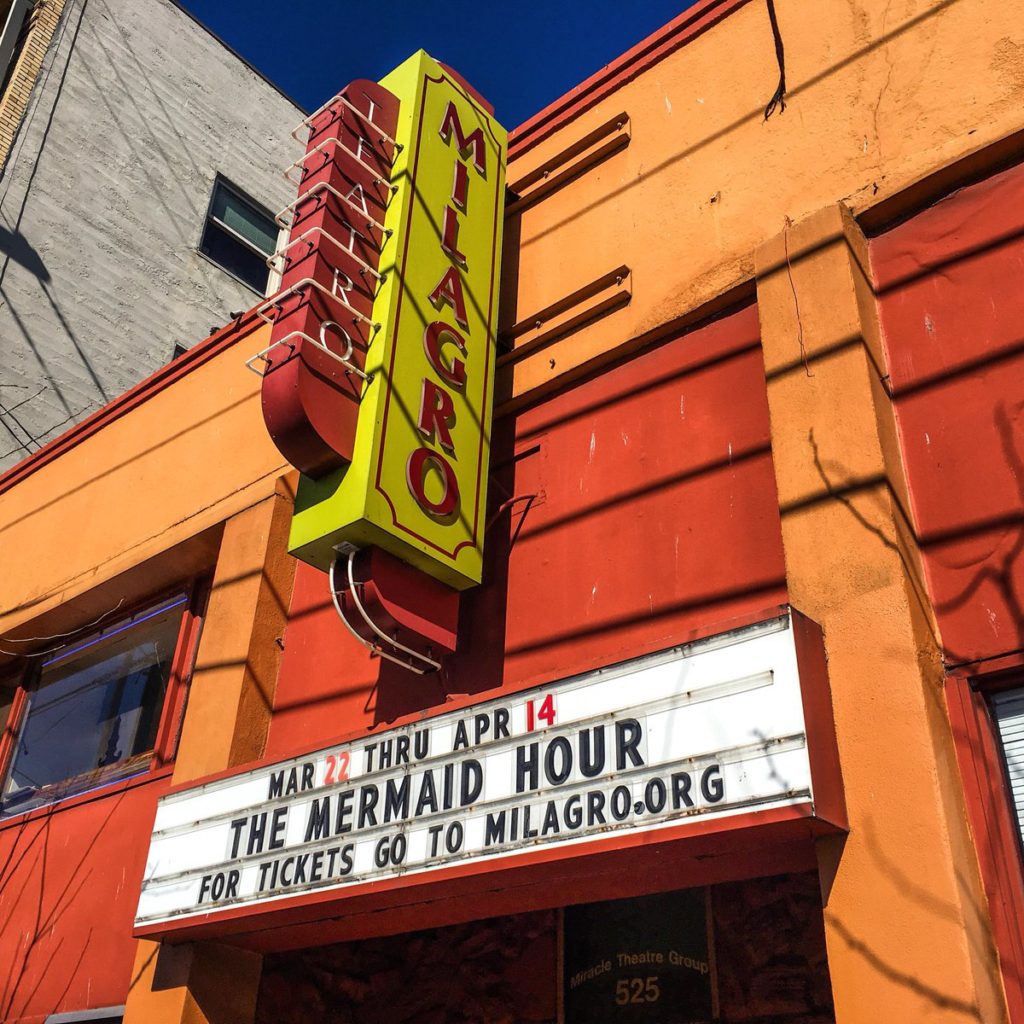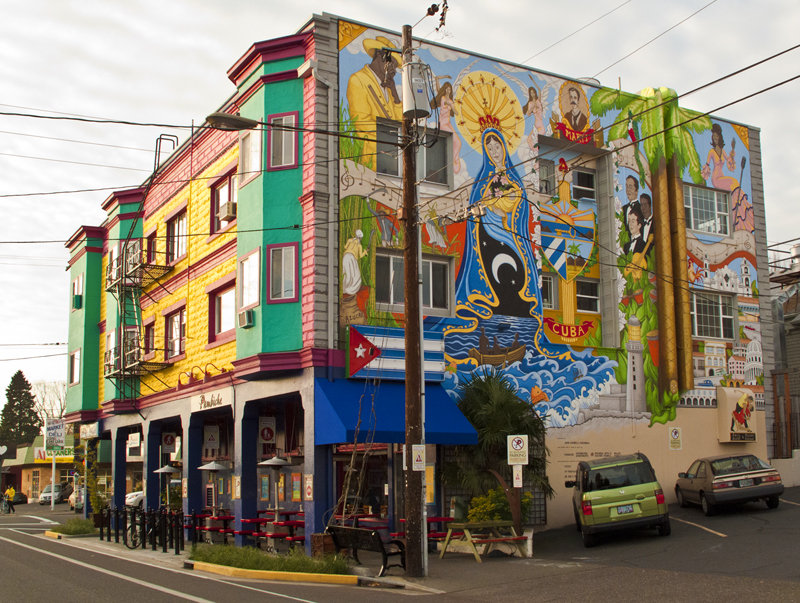Encuentro, meaning “encounter” or “gathering” in Spanish, has been a modern effort within Latin@ communities nationwide to encourage discussions on preservation in regards to Latin@ culture, heritage, and history. In April 2018, I attended the annual Encuentro Conference in Providence, Rhode Island on the Leonor Xochitl Pérez scholarship. This gathering was put on by a triad of organizations— Latin@s in Heritage Conservation (LHC), Rhode Island Latino Arts (RILA), and Rhode Island Historic Preservation & Heritage Commission (RIHPHC). As an aspiring Chicana architect, my mission in attending this conference was to better understand how I can apply emerging preservation strategies to my own field of study.

Speakers at the conference told empowering stories of projects that they were working on in cities with the largest deeply-rooted Latino populations in the United States. A majority of these speakers came from various career backgrounds (archivists, lawyers, architects, preservationists, city planners, students, teachers, artists, and musicians) and hailed from communities in Rhode Island, New York, New Jersey, Florida, Arizona, Texas, New Mexico, and California. They spoke about the industry that brought the Latino community to their city, the challenges that Latinos faced in seeking employment while also retaining their culture, and the tremendous resurgence and transformation that Latino communities have undergone in recent years. The two presentations that stuck most with me were one given by Zulmilena Then, an architecture student from Brooklyn who established Preserving East New York to speak out against the demolition of sacred buildings in her neighborhood, and another given by Layqa Nuna Yawar, an Ecuadorian Latinx artist who represents Latino heritage in the murals that he has painted on historic buildings in multiple countries.
I was the only attendee from the Northwest, which prompted me to consider what might be different about my own community. Portland, Oregon, a relatively young city, experienced its first large period of development from the 1870’s to the turn of the 20th century during the Expansive Railroad Era. For comparison, older cities on the East Coast, and even on the West Coast in San Francisco, began an initial period of city development sometime in the early 19th century and have already undergone two turn-of-the-centuries transitions. Like many American cities, the majority of Portland’s architecture reflects the histories of European settlers and was often constructed at the expense of underrepresented African American and Asian neighborhoods. In part because Portland is so young, there wasn’t enough time for minority groups to establish a strong historical foothold before their homes were bulldozed. These events, while shameful for our city, are important and relevant when considering future preservation strategies.

Portland is a younger city caught in the fast-paced nature of our modern-day technological and societal revolution. Modern construction technologies make it possible for Portland to keep up with the incoming wave of approximately 30,000 residents seeking new entrepreneurial opportunities each year. As we are all witnessing, Portland is undergoing another major period of development in present time. We see this daily in increased traffic and in the number of new housing projects that have popped up around town.
PRESERVATION FOR UNDERREPRESENTED GROUPS
Some preservation efforts involving underrepresented groups are occurring today in consideration of Portland’s past mistakes. The Bosco-Milligan Foundation/Architectural Heritage Center and City of Portland have joined forces to perform a survey of the remaining Portland buildings that reflect the preserve that the African American community held in our city’s history. Monuments have been established around the city to remember the Chinese and Japanese communities in Portland (i.e. the Japanese Gardens, Japanese American Historical Plaza, Oregon Nikkei Legacy Center, the Lan Su Chinese Garden, the new Chinatown/Japantown Historic District). Although city development has resulted in the gentrification of minority neighborhoods in the past, this is not a trend that has to continue, if we accommodate all groups in the construction that is occurring now.
After returning from Encuentro, I did some research on the history of the Latino community in Portland, wondering why I hadn’t seen any historic resources devoted specifically to commemorate the impact that the Latino community has had. I thought maybe, like other major cities on the West Coast, the Latino community had been pushed out. I am learning that the Latino community wasn’t necessarily oppressed in Portland’s development so much as it did not buy into Portland’s early industries as strongly as other minority groups.

According to city data, the Latino population is growing, appearing today in architecture through the appropriation of existing buildings. Some examples that I have seen of this around town are Latino restaurants (El Cubo de Cuba, Güero, ¿Por Qué No?, Pambiche, etc.) and the Milagro Theater on Stark that have repurposed previous apartment buildings, residences, and warehouses built in styles that are reminiscent of European culture (Queen Anne, Italianate, Colonial Revival, Beaux Artes, etc.). A few buildings that I’ve found have been constructed purely to further the Latino community and will hopefully serve as a record of history moving forward. One great example is the Portland Mercado, a food and grocery store cooperative that was constructed in 2015 in SE Portland to cultivate new Latino businesses. While other cities on the West Coast like San Francisco and Los Angeles are starting to devote museums (i.e. Chicano Park Museum and LA Plaza de Cultura y Artes) to communicate the historic influence of their Latino communities, Portland is just beginning to build edifices that support the incoming growth of the Latino community that is happening as a result of entrepreneurial opportunity now.
The most prominent question that I took away from Encuentro was this: How do we achieve the important task of remembering Portland’s story of initial development (including all groups that were present in Portland’s history) while still allowing for the creation of history within the city by emerging minority groups?

Although Portland has a strong historical foundation, it is still a relatively young city with a great deal of history left to make. When looking at other older cities, I recognize how much can happen in a difference of 100 years, or even in 50 years (or even 20) considering the rapid technological revolution that is transforming our society today. There is a great deal of opportunity to learn from past mistakes because our city is still young, because there is a greater awareness of the importance of diversity and inclusion today, and because we have the technology to build responsibly.
Written by Marion Rosas / Designer.
